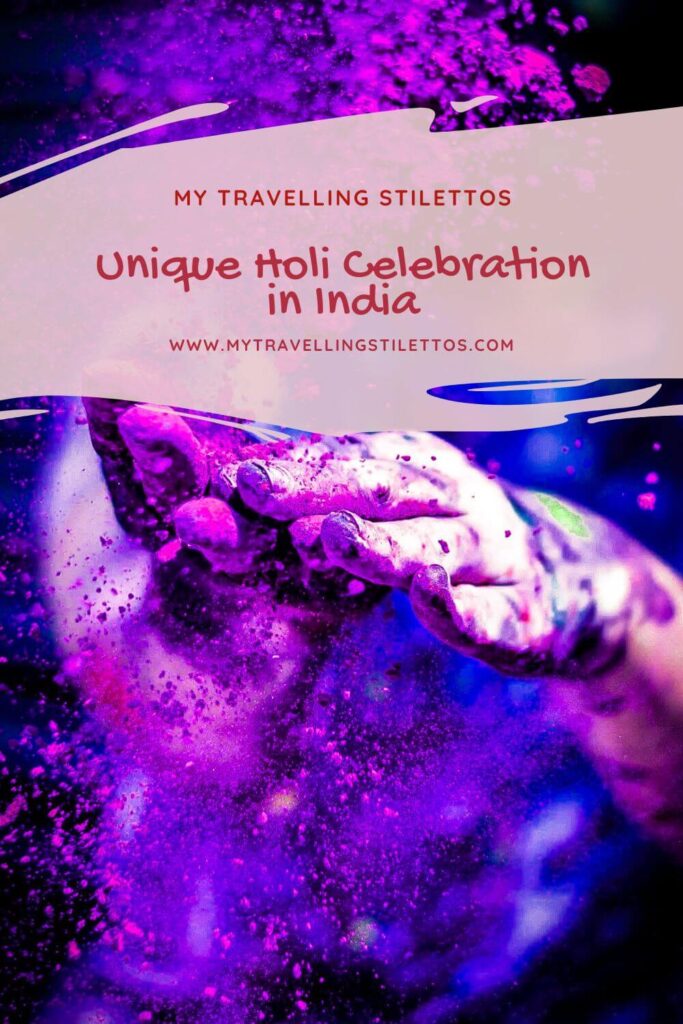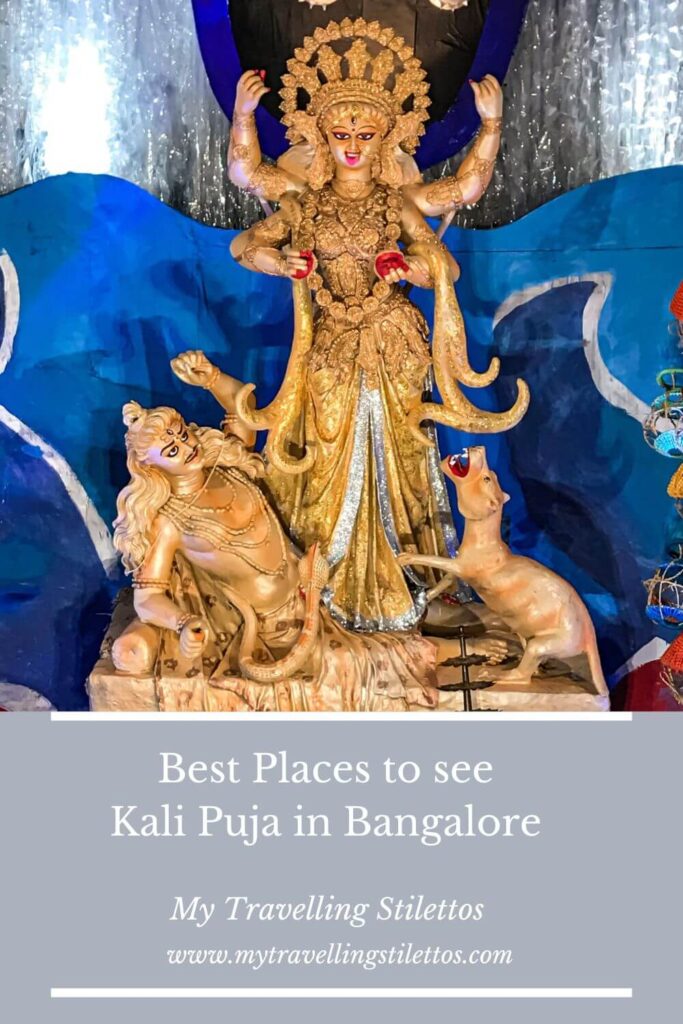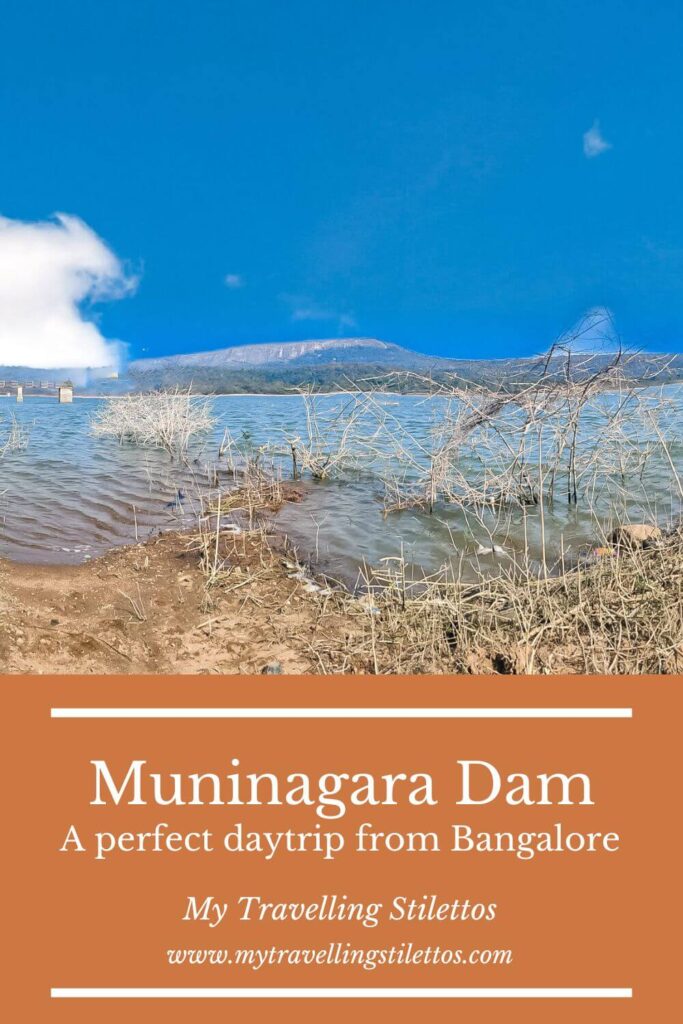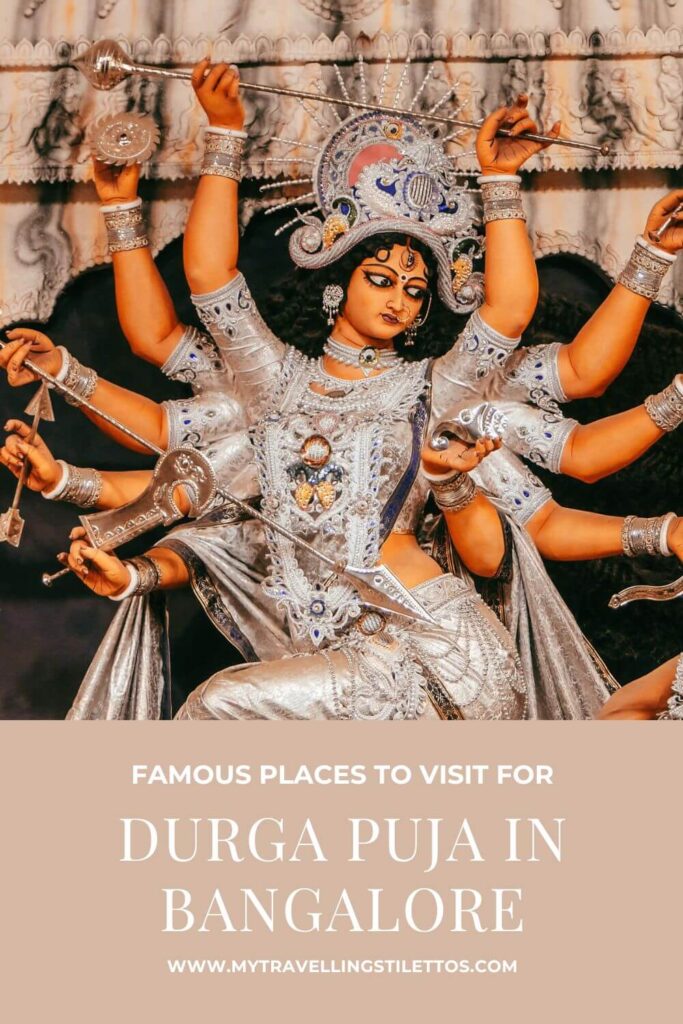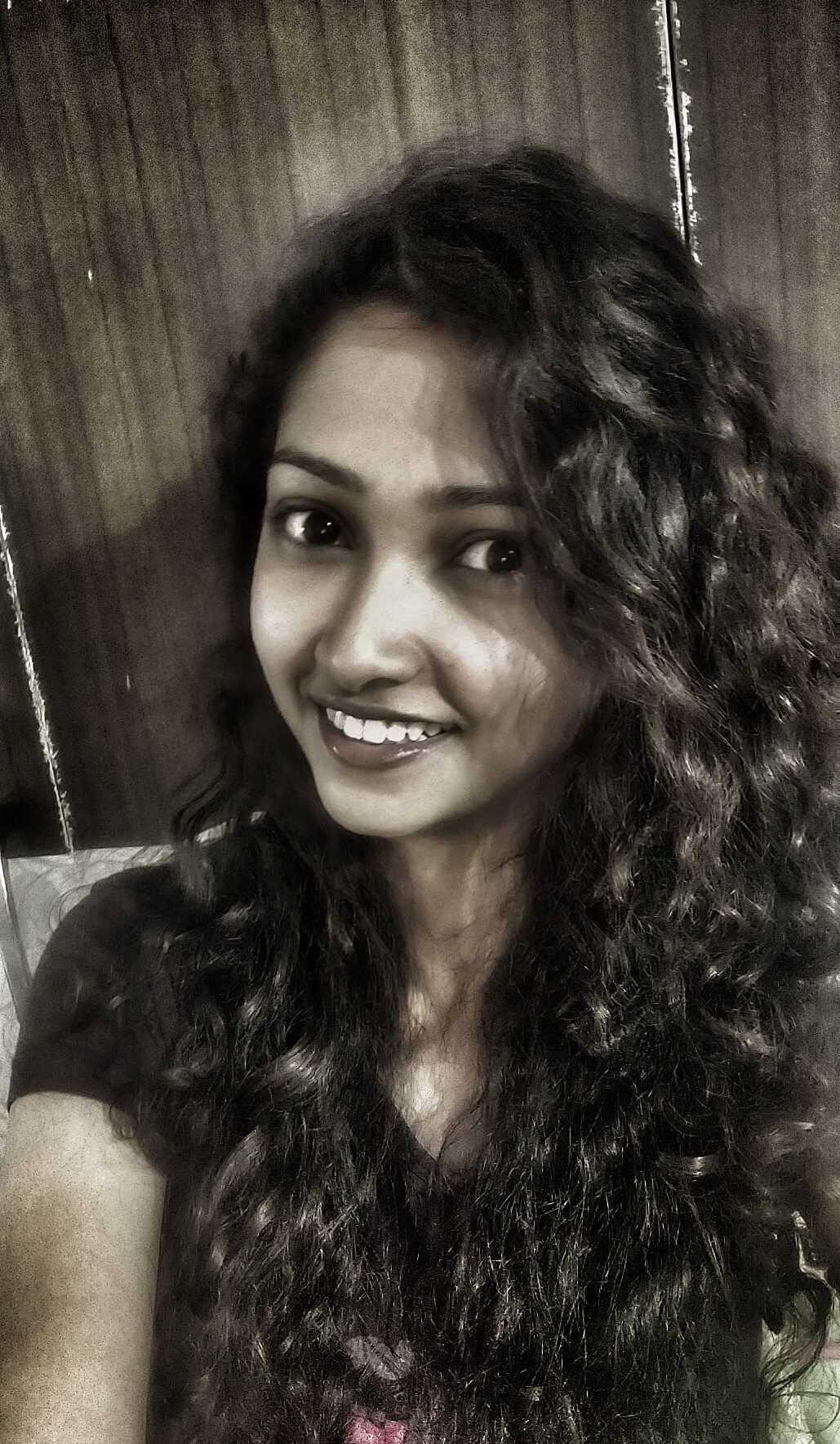Holi is probably the most vibrant ancient Hindu tradition. It is a celebration of love, colors, and spring. It also signifies good winning over evil and marking the start of the spring harvesting season. Though its roots trace back to ancient religious traditions, with time it has become a celebration for people from all backgrounds and a way to spread happiness. You may call it an ancient Indian brother of the La Tomatina festival of Spain but it is more fun and vibrant.
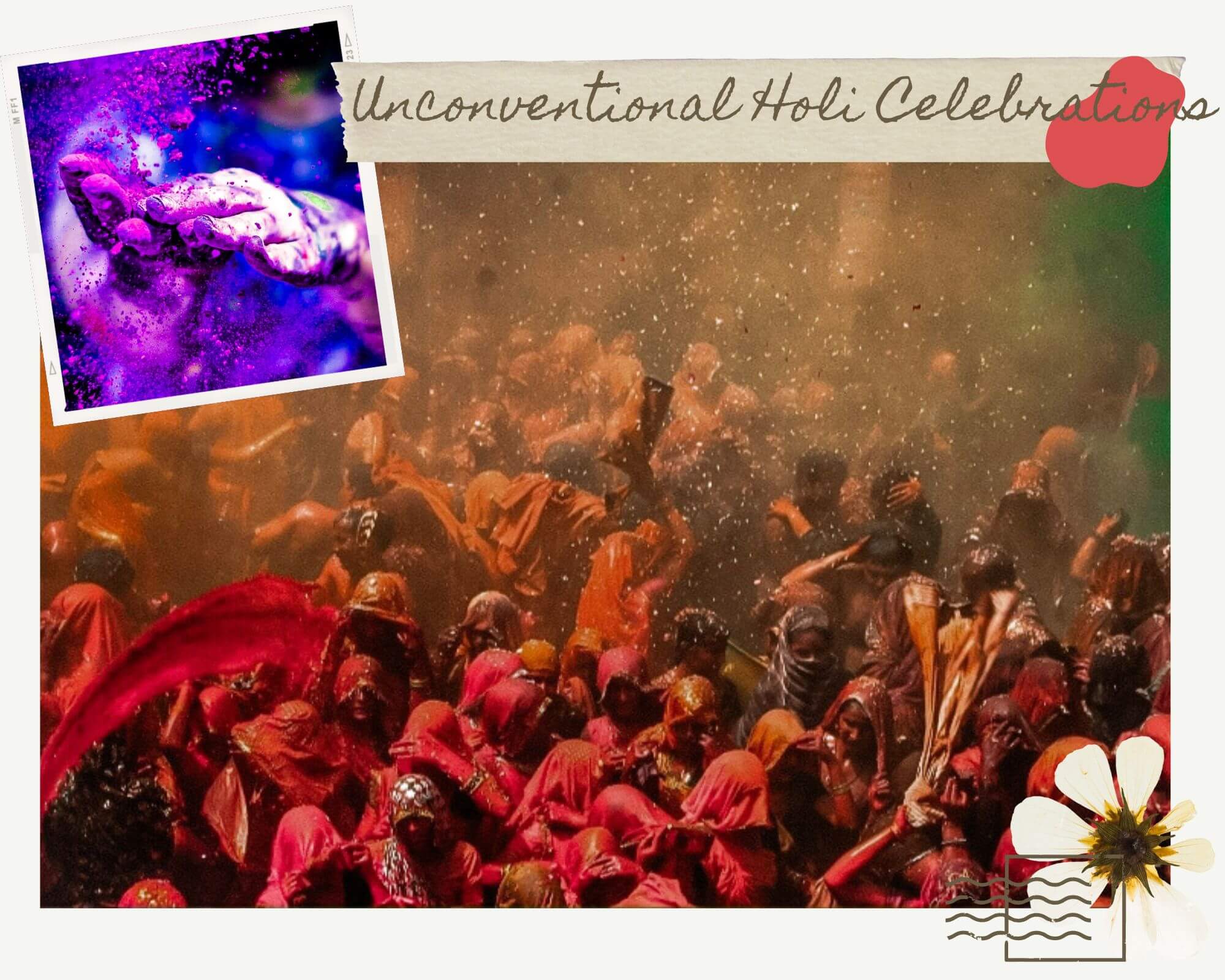
Usually, Holi is celebrated across most of India barring some areas in its southern region, even neighboring countries in Nepal, and Bangladesh. Lately, it has gained immense popularity in the Western continent through the large Indian diaspora due to its fun quotient and inclusiveness.
Traditionally, Holi is celebrated with people coming together, splashing and smearing colors at each other, drinking bhang, eating delicious sweets, and dancing to one’s heart’s content with music and dhols (a traditional Indian musical instrument, similar to drums). Bhang is a traditional Indian drink made of milk, dry fruits, and cannabis leaves. Not for the faint-hearted for sure. I also have fond memories of me and my sister playing Holi with the rest of my family and friends for hours.
India is known for its diversity. Every 10 km, you will find a unique culture. Every tradition, even Holi, has its regional twist and uniqueness. I am here to guide you to become familiar with some unusual and bizarre Holi celebrations in India.
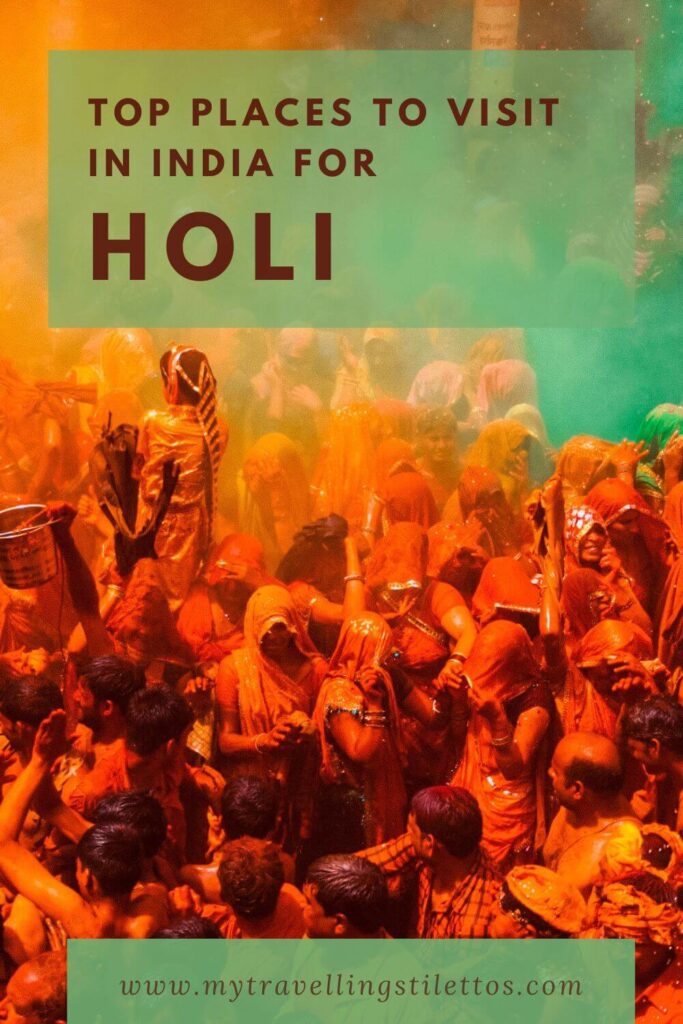
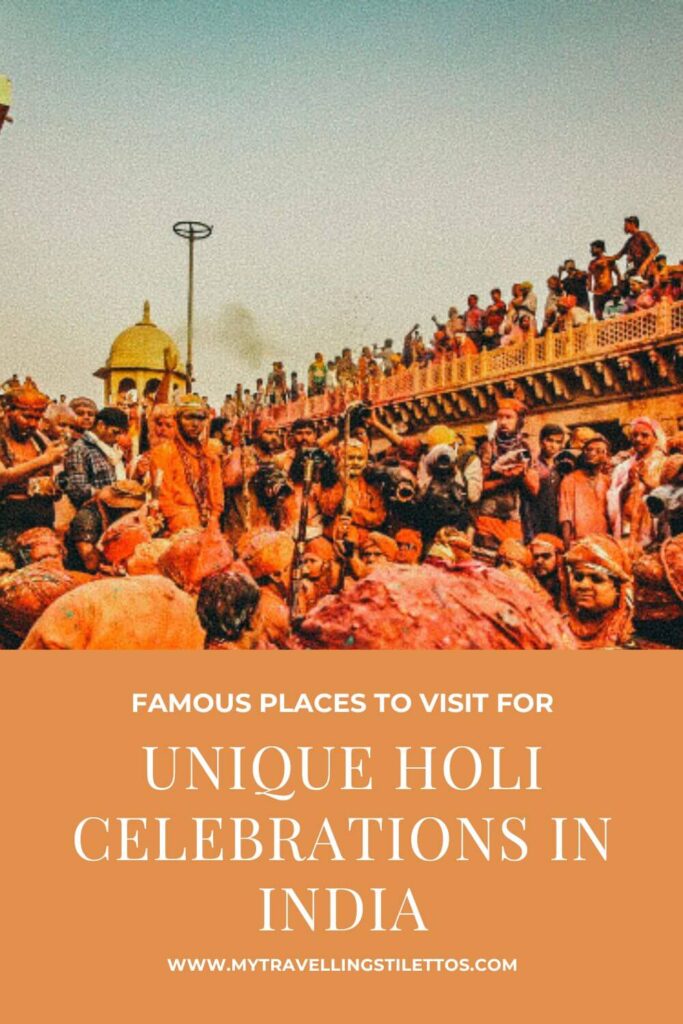
Significance of Holi
Before we explore some unusual Holi celebrations across India, let me tell you a little bit about its religious and cultural significance.
In Hindu mythology, Hiranyakashipu, an evil King, and his sister Holika tried to burn Prahlada, his son for being righteous and a devotee of God. Holika had a boon of immunity to fire. So, she took Prahlada on her lap and sat on a burning pyre. However, Prahlada chanted God Vishnu’s name and escaped from the fire unscathed in the turn of events, while Holika was incinerated despite the boon. Thus, marking the win of righteousness over evil. To date, a pyre is burnt the last night before Holi as a metaphor for burning evil to bring out goodness. It is called Holika Dahan. The name ‘Holi’ is derived from Holika too.
The introduction of colors and playfulness in Holi comes with the story of Radha-Krishna, the divine lovers in Hinduism. Folklore says Lord Krishna, Radha used to play with colors, sing, and dance on the banks of the river Yamuna. Thus, making Holi a celebration of love and colors.
When is Holi celebrated?
Holi is celebrated on the full moon day in the month of Phalgun. Usually, this is when the harvesting of spring crops starts. So, Holi is also the celebration of spring, a new beginning.
This year, Holi is on 25th March, 2024.
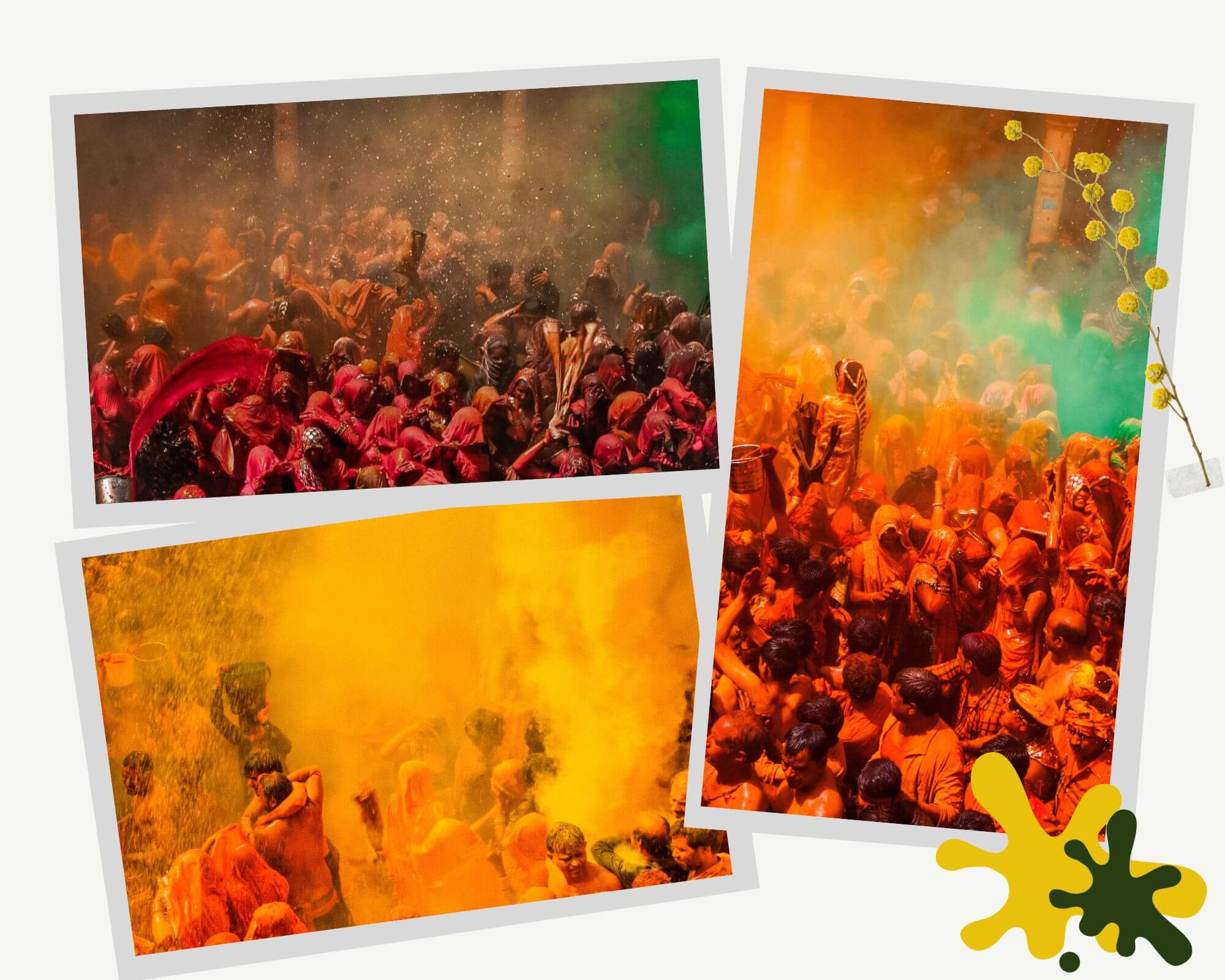
Unusual Holi Celebrations in India
Mathura-Vrindavan – Braj ki Holi
Usually, how Holi is celebrated in most parts of India today has come from how the festival is carried out in the holy cities of Mathura and Vrindavan. However, the sheer enthusiasm and zeal for Holi in the twin towns of Mathura and Vrindaban make the entire experience unique. So, I must include them on this list of unique and unusual Holi celebrations in India.
According to Hindu mythology, the twin cities of Mathura and Vrindavan were the backdrop of the divine love story of Radha – Krishna. You will find a grand celebration of Holi in every street, every corner of the city. The celebrations last for an entire month. Hands down, Mathura and Vrindaban are among the best places to visit during Holi in India.
Among all the celebrations, two events stand out as a unique and unusual way of celebrating Holi.
Phoolon ki Holi in Vrindavan
As the name goes, this is Holi with flower petals. The event takes place at the Banke Bihari temple on the Ekadashi, or eleventh lunar day during the one-month Holi celebration in Vrindaban. People throw fresh flower petals in every direction and at each other. It is a sight to behold. The aromas of fresh petals fill in the air. You won’t be disappointed.
Widow’s Holi
Unfortunately in Hindu tradition windows were considered a social stigma even a few decades back. They were supposed to live in isolation, devoid of any color, happiness, or festivals. They were sent to different ashrams across the country to live life often without bare necessities. I highly doubt that there is any religious or traditional significance behind this custom. It is just another way of avoiding the financial responsibilities of another woman. Vrindavan has a significant number of widows living in different ashrams. After a long legal battle, the widows of Vrindaban were allowed to play Holi. Since then every year all widows from Vridaban’s ashram gather in Shri Radha Gopinath Ji Temple in bright-colored dresses and offer colors to the god, even smear colors to each other. It is a beautiful event. Even though there is still a long way to go for the empowerment and betterment of these women, it is a significant step forward.
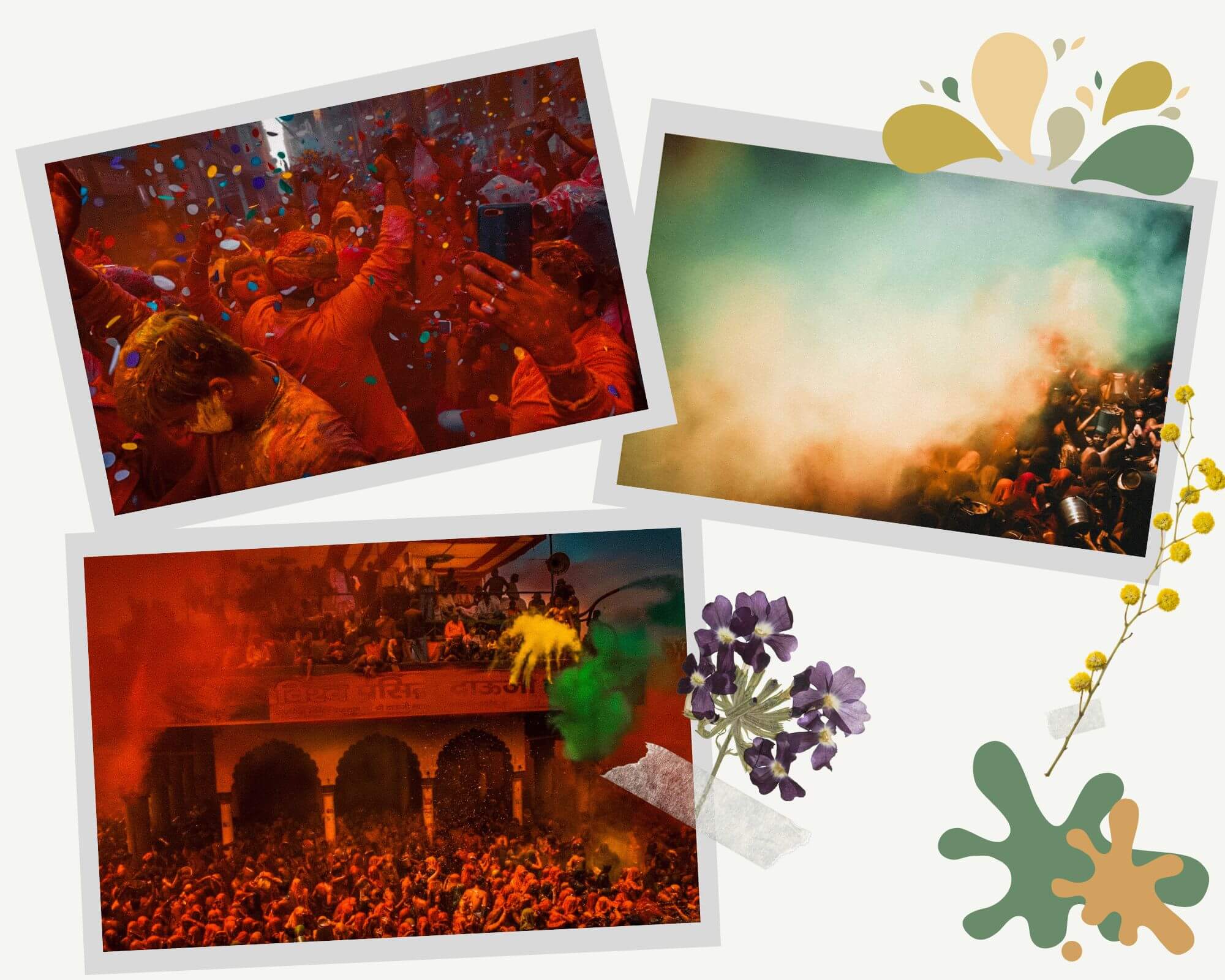
Shantiniketan, West Bengal – Basanta Utsav
Basanta Utsav in Shantiniketan is the only Holi celebration on this list, probably even the only one in India, which is a product of a cultural initiative, not a religious ritual. Shantiniketan is a small neighborhood in Bolpur town, West Bengal. It is founded by Devendranath Tagore, the father of India’s first noble laureate Rabindranath Tagore. Later, Kobiguru Rabindranath Thakur made Shantiniketan his home and wrote most of his masterpieces while staying here. He, himself who did not receive a conventional education, had been a strong advocate of unconventional ways of teaching. In Shantiniketan, he founded the Visva Bharati School and University which endorsed the amalgamation of bookish knowledge with the elements of nature, music, singing, dancing, and other artistic aspects. Personas like former Prime Minister of India Indira Gandhi, and noble laureate Amartya Sen are alumni of Visva Bharati. Kobiguru started Basanta Utsav to promote brotherhood, cultural heritage, and inclusiveness. Spring is beautiful in Bolpur. The region sees a variety of flowers during spring. In Basanta Utsav, people play Holi only with organic Abir (dried colored powder) made of local flowers and plants, while singing, playing music, dancing, reciting poems, and performing different cultural activities. Everyone from students to locals to tribal communities of the region, and even tourists participate in the event. What makes it unique is its lack of rowdiness like that of the rest of India, rather subdued intellectuality. This uniqueness has placed Shantiniketan on the list of UNESCO’s World Heritage sites.
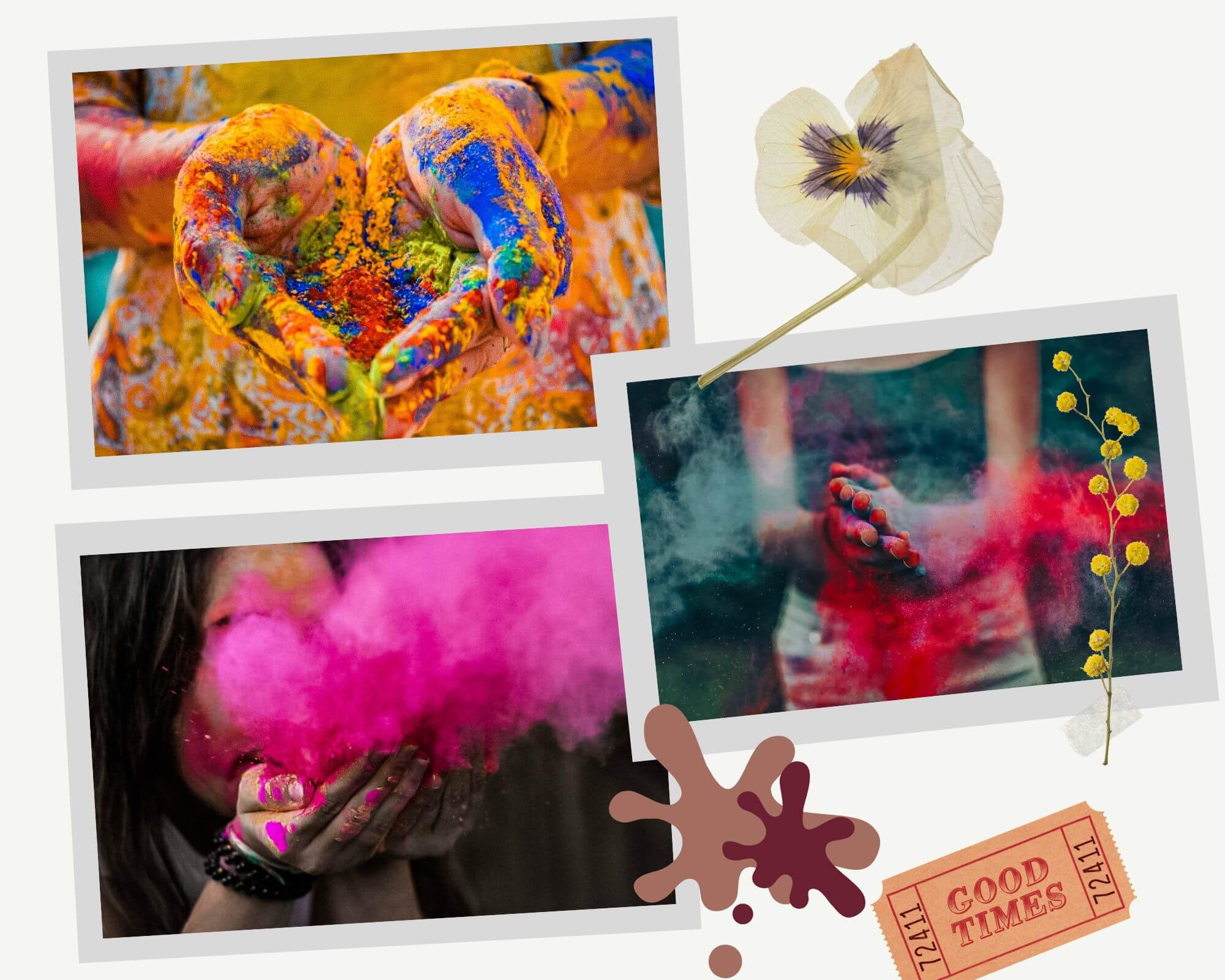
Barsana, Uttar Pradesh – Lathmar Holi
Barsana is Radha’s birthplace. The word Lathmar translates to beating with sticks in the local language. As a custom, women in Barsana beat men with sticks to recreate scenes from the Radha-Krishna tale. Obviously, it is an act. No actual person is harmed during the event.
Manipur – Yaosang Festival
Among the northeastern states of India, Holi is celebrated widely in Manipur. However, it has its own local twist to it. It is called the Yaosang Festival. The Meitei people, the predominant tribe of this region, celebrate 5 days long festival. It starts with Yaoshang Mei Thaba where a mock hut is burned while chanting hymns and prayers, similar to Holika Dahan. This is followed by kids collecting Nakatheng or festive money from door to door which is considered lucky, local games (like Yubi Lakpi), playing with colors or Pichkari, dancing under moonlight, and many more interesting activities. The highlight of the entire event has to be the Thabal Chongba procession. During the procession, the Manipuri women enact the scenes from Krishna’s childhood. They dress as Brajmais (this is what women from the Braj area are called in the local language) and run after kids dressed as Brajagops (cowherds of the same village) with sticks, after being teased. The entire scenes are depicted through a beautiful dance form named Halankar.
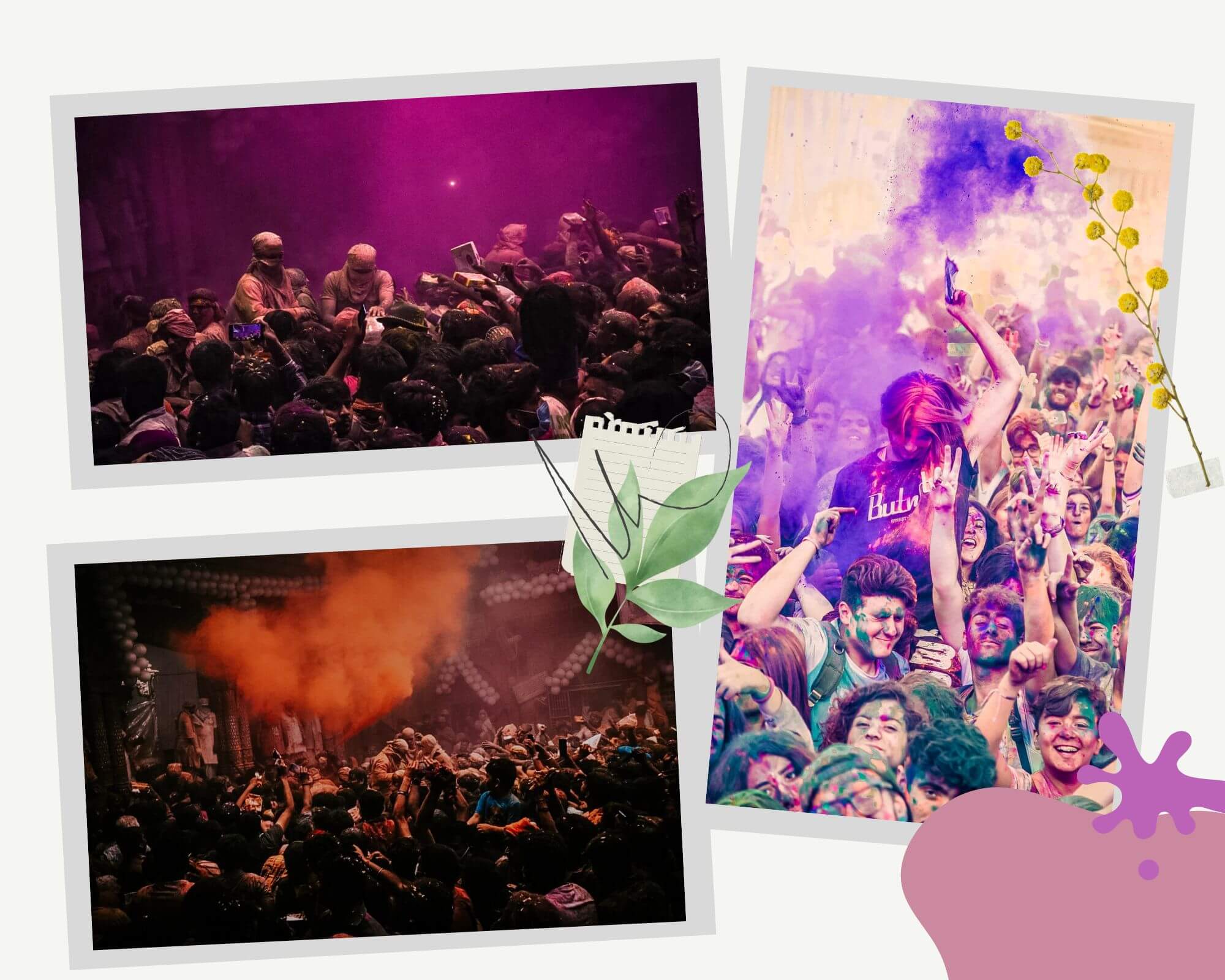
Kerala – Manjal Kuli or Ukuli
Traditionally, people from the southern part of India do not celebrate Holi. However, some communities in Kerala play Holi with only turmeric powder. This tradition is known as Manjal Kuli and the epicenter of all related festivals is the Gosripuram Thiruma’s Konkani Temple in Kochin. In some temples, the celebration starts with cutting and bringing an arecanut tree to the shrine symbolishing Goddess Durga’s victory over the demons while in some temples creating a mud crocodile who is believed to be a Goddess who helped the community through their hardships.
Punjab – Holla Mohalla
Hola Mohalla is a Sikh festival that derives its inspiration from Holi. It is a 3-day festival that usually falls a day before or on the Holi. During the event, the Nihang Sikhs dress in the traditional blue Sikh Warrior attire and indulge in martial arts, recreational fights, langars, music and poetry, and kirtans. The events of Holla Mohalla signify the Sikh’s valour, bravery, strength, and strong brotherhood.
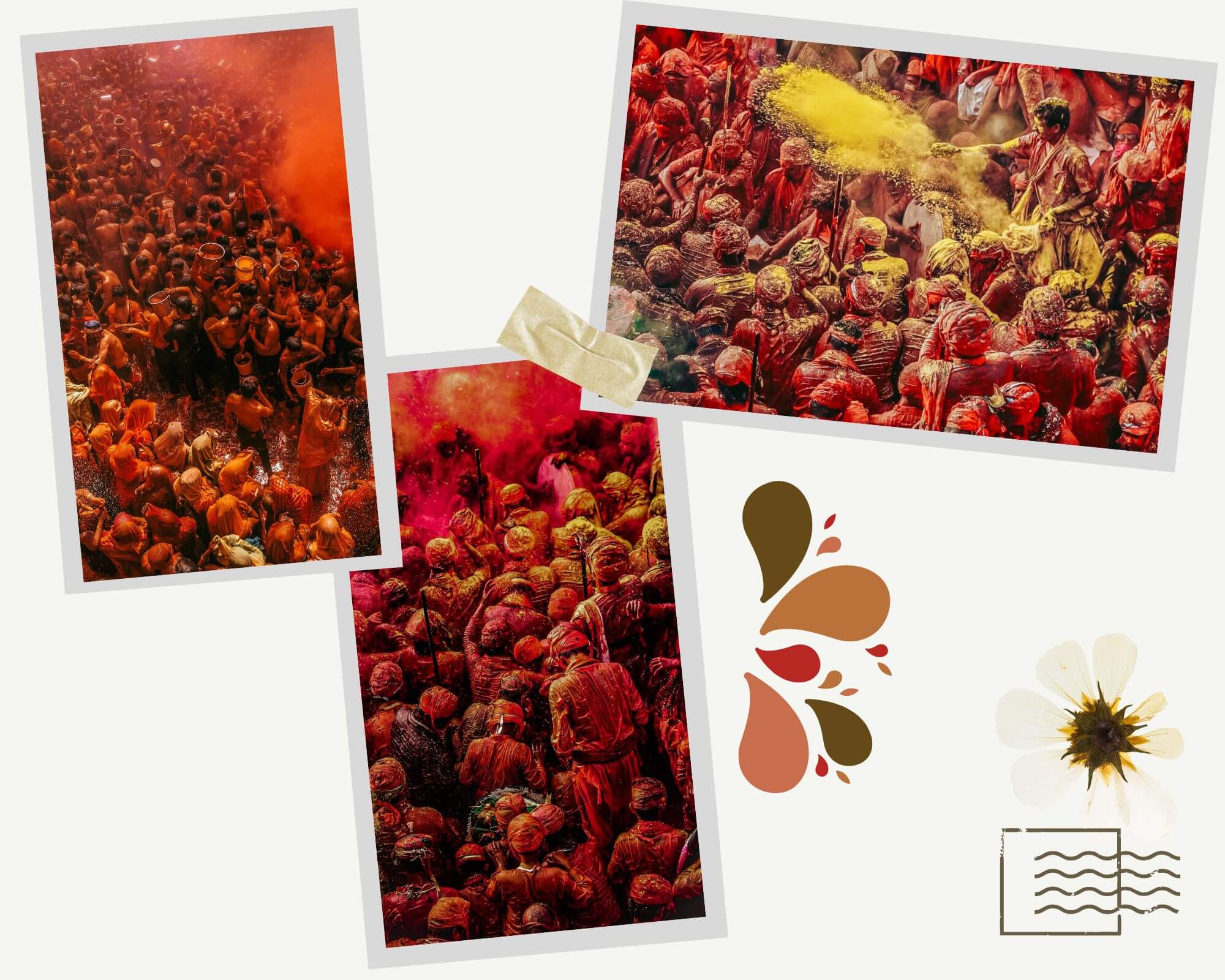
Udaipur, Rajasthan – Royal Holi
On the night of the Holi celebration, the royal Mewar family of Udaipur, who used to rule Udaipur once, takes out a grand procession with several decorated horses, elephants, the royal band, fireworks, etc.
Odisha – Dola
In Odisha, Dola Purnima or Dol Yatra is a 6-day long festival that ends on the full moon day in the month of Falguna. On every Falguna Dashami or 10th lunar day before the full moon, a grand procession takes place. The idol of Lord Krishna is carried in a decorated palanquin from door to door. Sankirtan Mandali (a traditional group of drummers, singers, and musicians who narrate devotional songs) follows the palanquin. The procession is called dol yatra. Each household in the village offers Bhog to Lord Krishna and joins the procession and plays with Abir (dry-colored powders).
This tradition is also followed in rural Assam and West Bengal.
In the Puri Jagannath Temple, the same tradition is followed with Lord Jagannath, who is also worshipped as Dolagovind.
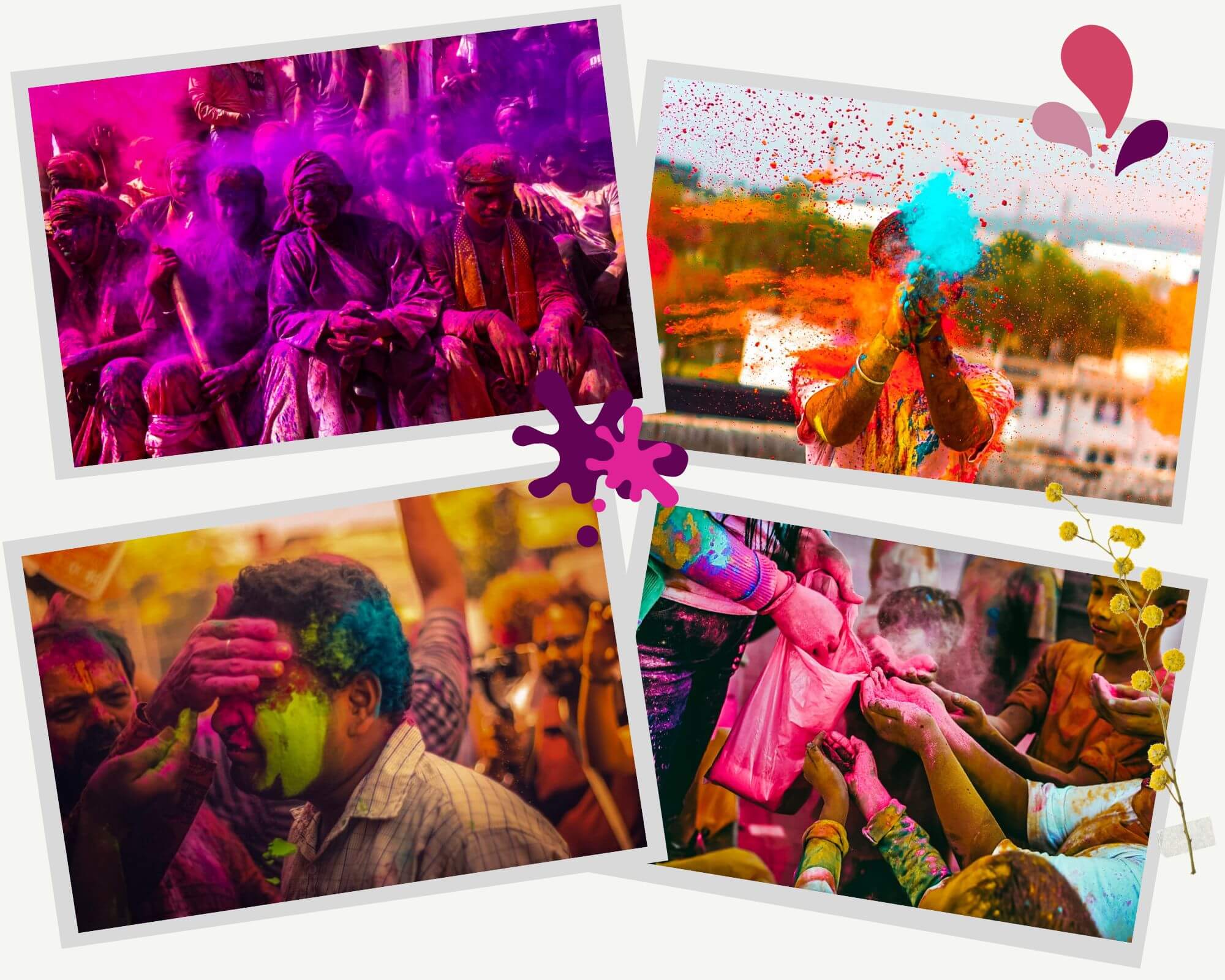
Amazingly, probably a few thousand years old tradition is still followed in so many different ways. I would love to hear if you know of any other unusual ways of Holi celebrations. I will be glad to add it to this list of unusual Holi celebrations in India.
Disclaims: Some of the images are stock images. I have acquired the rights to use them.

